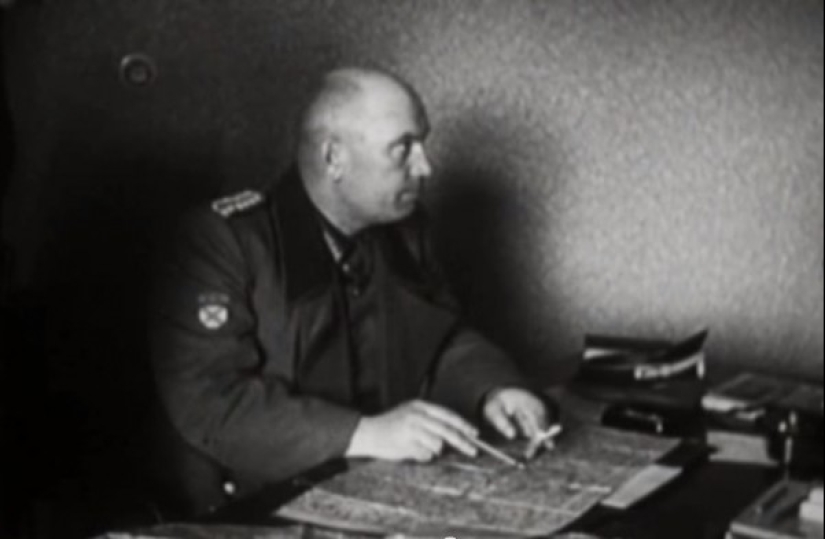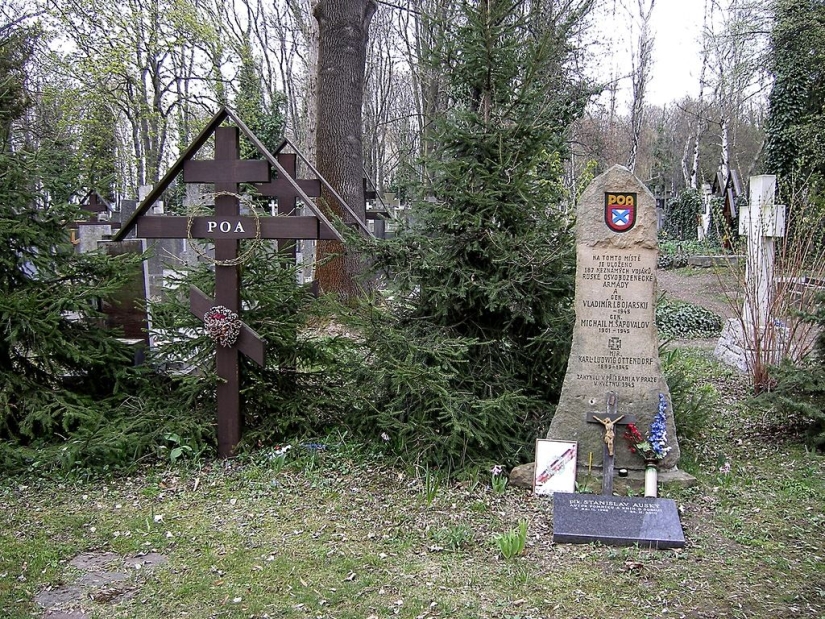"Let's go to cut down the Germans": how collaborators from the Russian Liberation Army liberated Prague in 1945
Categories: Conflict | Europe | History | Nations
By Pictolic https://pictolic.com/article/lets-go-to-cut-down-the-germans-how-collaborators-from-the-russian-liberation-army-liberated-prague-in-1945.htmlThe northern and eastern parts of the Czech Republic were liberated by the Red Army, and the west — by the US troops. But for many years, the fact that from The Nazis were beaten out of Prague by Russian collaborators from the ROA. At the end of the war, they sought salvation and made an alliance with the Czech underground, which organized the Prague Uprising. However, this did not bring them forgiveness. The Vlasovites tried to surrender to the Americans, but were still convicted of treason.

In the spring of 1945, it was clear to everyone that the Third Reich was in agony. The German troops were retreating, and the military command of the collaborationist formations of the Wehrmacht was considering how to proceed and ceased to obey the German curators. This situation has developed in the ranks of the Russian supporters of Germany. On April 29, 1945, an infantry division of the Committee for the Liberation of the Peoples of Russia (KONR) came to the outskirts of Prague from the Oder Front.

ROA Volunteers
The unit had 16-17 thousand soldiers, who were commanded by the former Colonel of the Red Army, Major General Sergei Bunyachenko. German Major Schwenningr described Bunyachenko as follows:
A similar description was given by the White emigrant Colonel Andrey Arkhipov, who commanded the 1st regiment of the division. He recalled that Bunyachenko was a competent person with a great will and a strong character, but rude to his subordinates.

General Sergei Kuzmich Bunyachenko
Since the end of April, Bunyachenko stopped listening to the orders of the Germans, whom, according to the memoirs of the same Arkhipov, "he hated with every fiber of his soul." The commander led the division to join the 20-thousandth Southern Group of Troops of the KONR of Major General Fyodor Trukhin. Bunyachenko was also accompanied by the leader of the Russian collaborators, General Andrey Vlasov. On May 2, the Germans handed over an ultimatum and demanded that Bunyachenko obey their orders.
Delegates from the Czech resistance arrived at the headquarters of Sergei Bunyachenko's division. Former Nazi collaborators were offered a joint struggle against the Germans and the Bolsheviks. For their help in the liberation of Prague, the Russian fighters were promised political asylum in Czechoslovakia. On May 5, a meeting took place at the division headquarters, at which everyone spoke in favor of an alliance with the Czechs, except Vlasov and Arkhipov.
 Russian volunteers and Czech rebels
Russian volunteers and Czech rebels
On May 5, the Czech resistance seized the Prague radio station and at 11:38 the signal for a general uprising was sounded. At noon, Reich Minister Karl Frank ordered the troops to SS suppress the speech. Barricades were formed on the streets of Prague, and 30 thousand rebels took up defensive positions. At the same time, the soldiers of the Bunyachenko division were drawn to the city.
Residents of the Prague suburbs recalled how on the afternoon of May 5, their streets were filled with columns of soldiers in German uniforms and with ROA chevrons. Many rode bicycles, to which faustpatrons were attached. When the Czechs asked where they were going, the soldiers answered in Russian: "to cut down the Germans" or "to liberate Prague". On the morning of May 6, the Russians at the towns of Zbrasla and Radotina engaged the Germans.
 Soldiers of the 1st Infantry Division of the KONR are included in Prague
Soldiers of the 1st Infantry Division of the KONR are included in Prague
A few hours later, Bunyachenko's entire division entered the southern and western districts of Prague. By this time, the Red Army units were located 150 kilometers from the Czech capital. On the night of May 6 to 7, Bunyachenko's headquarters gave the Germans an ultimatum. The garrison was asked to stop fighting and go to the city of Pilsen, which was already occupied by the Americans. No response was received and the Vlasovites stormed the center of Prague. Colonel Arkhipov recalled:

Prague residents meet Russian allies
According to the memoirs of the Germans and Czechs, the Russian volunteers fought heroically. Particularly fierce fighting took place in the center of Prague, which was defended by SS troops. The Russians recaptured the city prison, from which they released political prisoners and Jews. The Vlasovites took the airport and established themselves in the Strahov Monastery. Bunyachenko's men pulled back the main enemy forces, stopped the Germans ' attempt to introduce SS tanks into the center, without which the German command could not take control of the city.
The center of Prague during the fighting
On the morning of May 7, it became clear that the US troops would not enter the city, and the pro-communist part of the Czech resistance told the Vlasovites that they no longer considered them allies. No security guarantees were given to the Russian collaborators. On the night of May 7, the division left the city and went to surrender to the Americans. The next morning, the Germans returned to the central districts of Prague.
On May 8, at 16:00, the act of surrender of the Prague garrison was signed, and at dawn on May 9, the armored vehicles of the 4th Guards Tank Army of Colonel-General Lelyushenko entered the city. According to the estimates of historians in The Prague Uprising killed more than 3 thousand Czechs. The Vlasovites lost up to 300 fighters killed. About a thousand Germans died on the streets of Prague.
 Graves of ROA fighters at the " Olshansky cemetery»
Graves of ROA fighters at the " Olshansky cemetery»
The leaders of the Czech resistance asked the Soviet General Rybalko to spare Bunyachenko's men, who remained in prison. Prague. Of the several hundred prisoners, 187 were shot. 325 Russian collaborators are buried in the "Olshansky Cemetery" in Prague. While the Communists were in power in Czechoslovakia, the liberation of the city by the Vlasovites was not mentioned.
 Executed leaders of Russian collaborators. Far right Andrey Vlasov
Executed leaders of Russian collaborators. Far right Andrey Vlasov
Bunyachenko's 1st division did not have time to leave for the Americans. Only a few officers managed to escape to the West, and the rest of the staff was put on trial. Most of the servicemen were sent to the camps, and Sergei Bunyachenko and Andrey Vlasov were hanged as traitors on August 1, 1946. Russian volunteers also participated in The Warsaw Uprising, which ended with the defeat of the Poles.
Keywords: Uprising | World War II | Prague | Czech Republic
Post News ArticleRecent articles

Gloria Ramirez can be considered a very ordinary American. Her life was quite happy and unremarkable. Everything changed when she ...

John Poppleton is a photographer and artist who knows what beauty is firsthand. He creates it himself. Specializes mainly in ...
Related articles

The name of Boris Skosyrev is not very familiar in our country, but in Europe this man was remembered very well. This energetic and ...

In April 1943, off the coast of the Spanish town of Huelva, fishermen picked up a drowned man in the uniform of a British Marine ...

Propaganda in Nazi Germany was a central element of domestic politics. Revanchist sentiments were literally stuffed into people's ...

Today, the white flag is perceived as a sign of surrender or a request for negotiations. But when and why did a simple white cloth ...